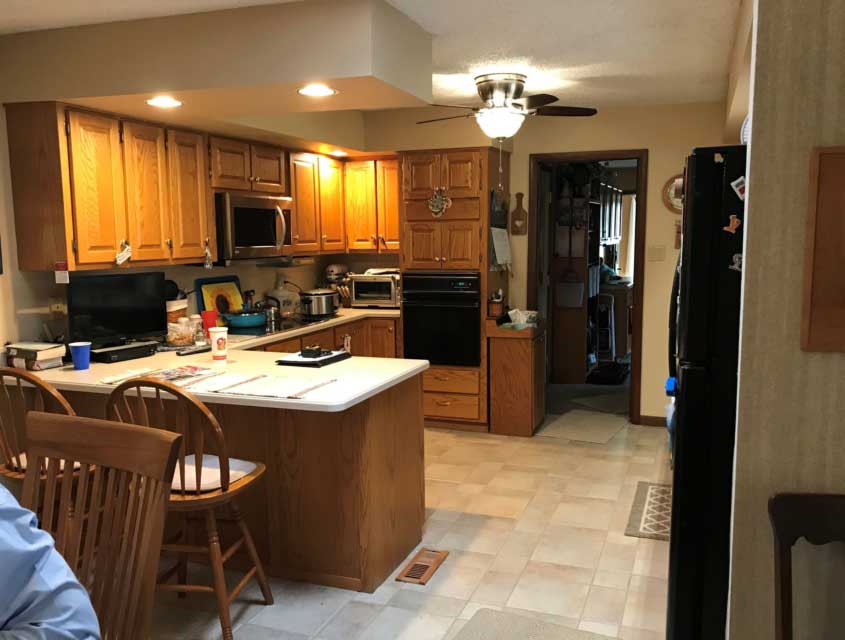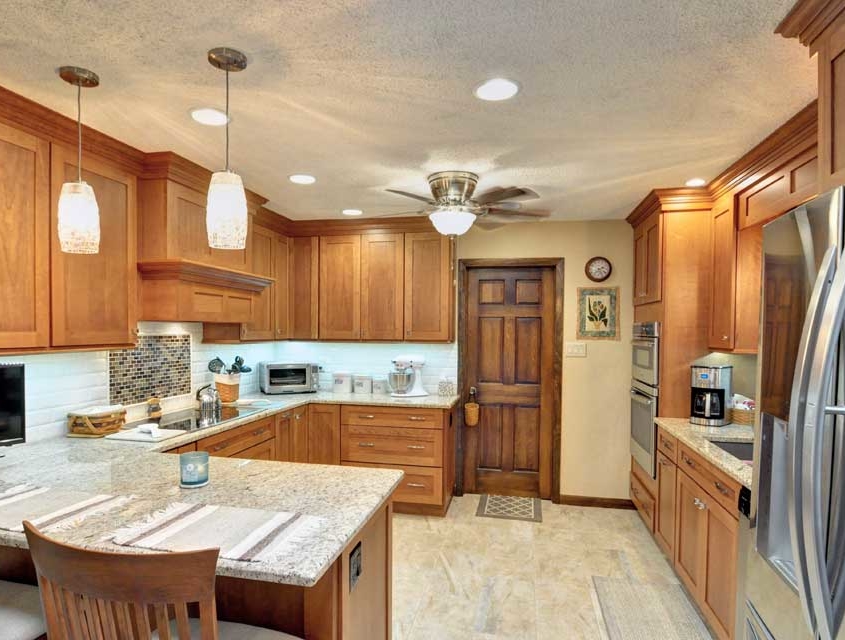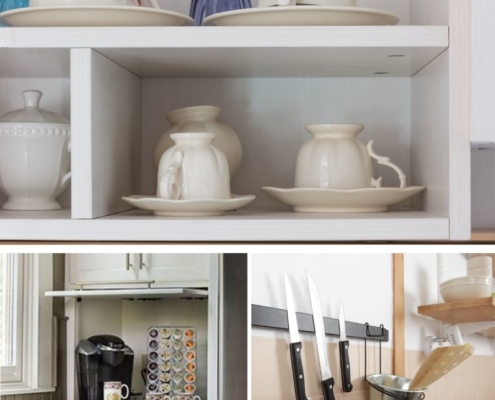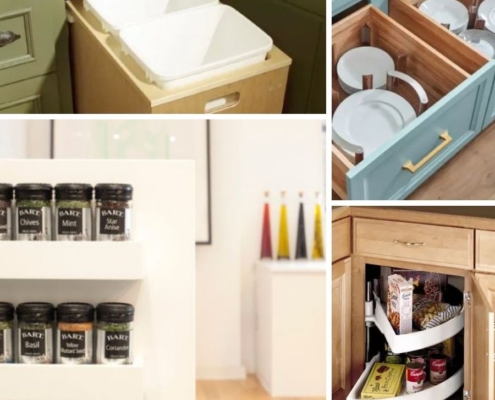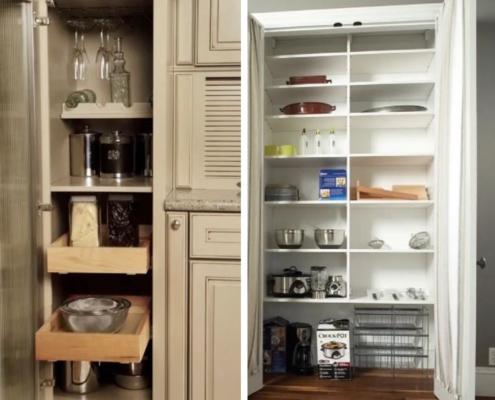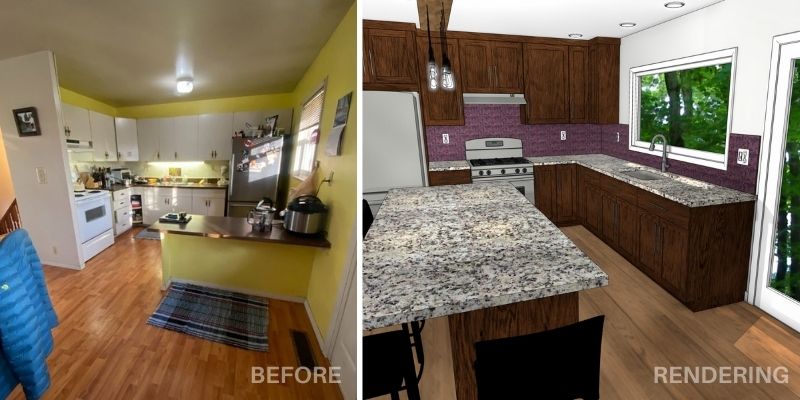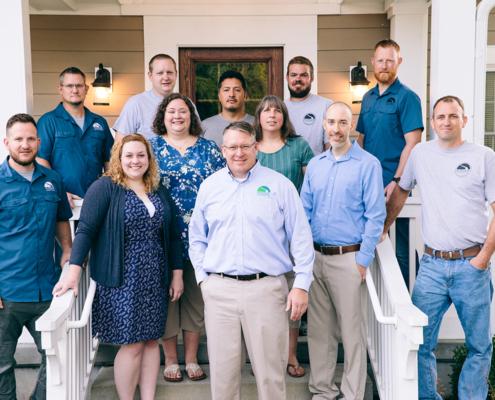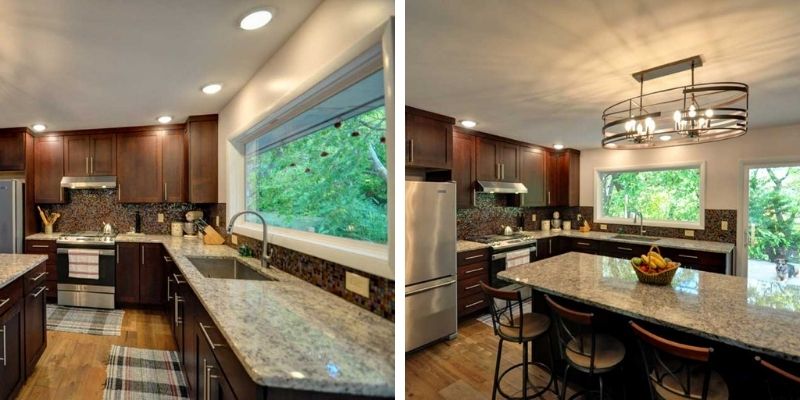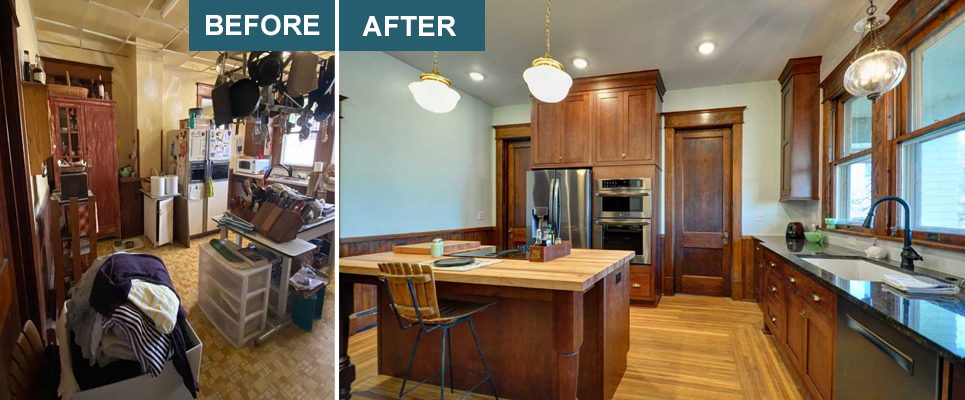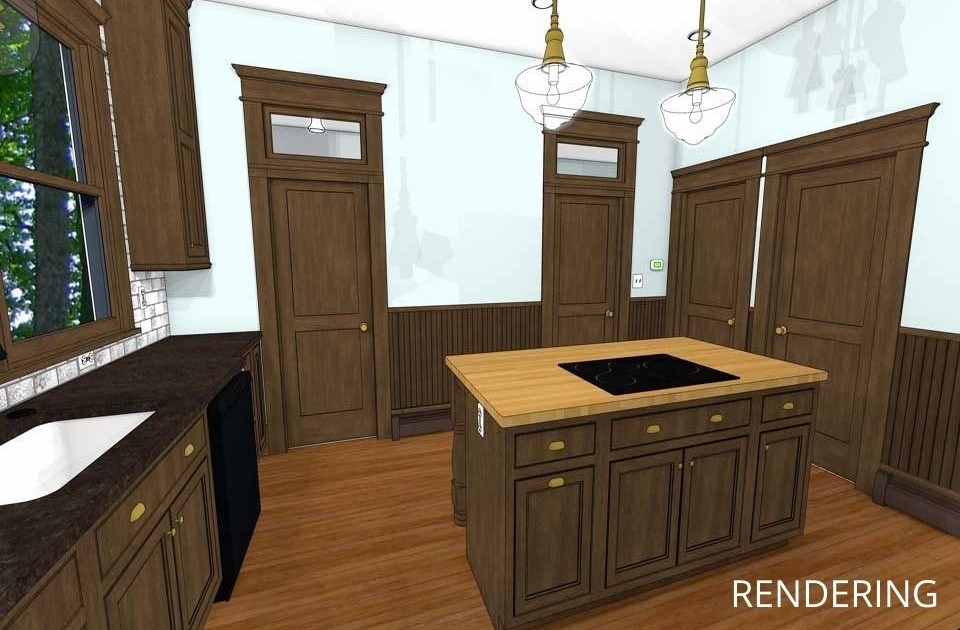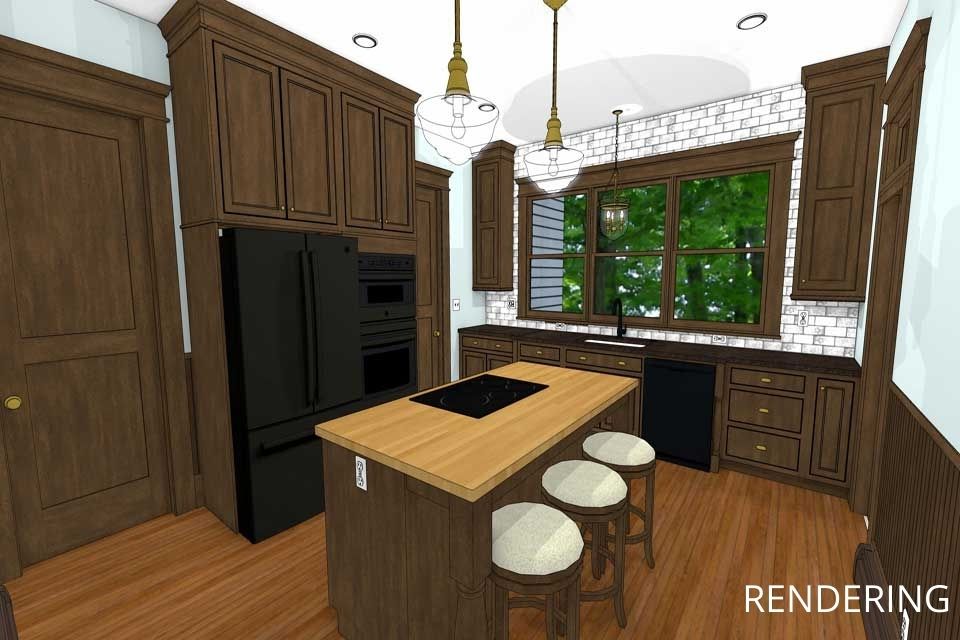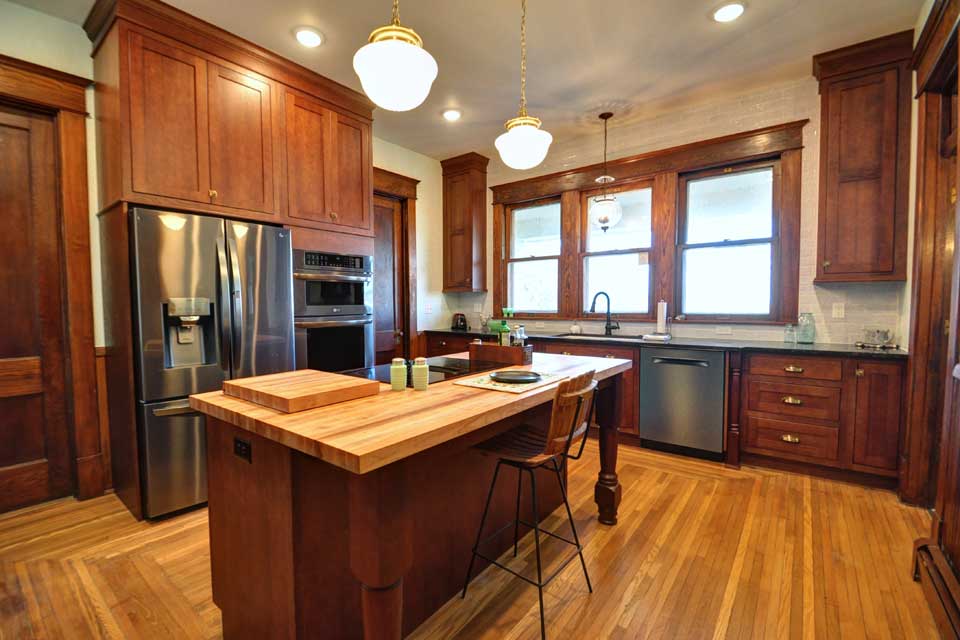Holiday Harmony: Practical Kitchen Updates for Better Hosting
As the holidays approach, our homes become more than just living spaces—they transform into hubs of warmth, laughter, and shared memories. At the heart of all this festive magic? The kitchen. It’s where aromatic spices mingle with the warmth of the oven, where glasses clink in cheerful toasts, and where every dish served is a testament to love and tradition.
But let’s face it, hosting during the holidays can sometimes feel like a culinary marathon. Whether it’s prepping the family feast or baking cookies with the kids, your kitchen needs to be more than just beautiful—it needs to be smart and functional. That’s where a few thoughtfully chosen updates can make a world of difference.
Imagine a kitchen where every tool is at your fingertips, where space is maximized so that family and friends can join in the cooking without stepping on each other’s toes. Think about the ease of a double oven baking your pies to perfection while your roast slow-cooks in the other. Envision countertops that don’t just look stunning but also make your holiday prep smoother and more enjoyable.
This is the essence of holiday harmony in your kitchen: a perfect blend of form and function, where every update enhances not just your kitchen’s appearance, but its role as the heart of your holiday home. So, let’s explore some practical, yet stylish kitchen updates that can elevate your hosting game this holiday season and beyond.
Maximize Your Kitchen Storage
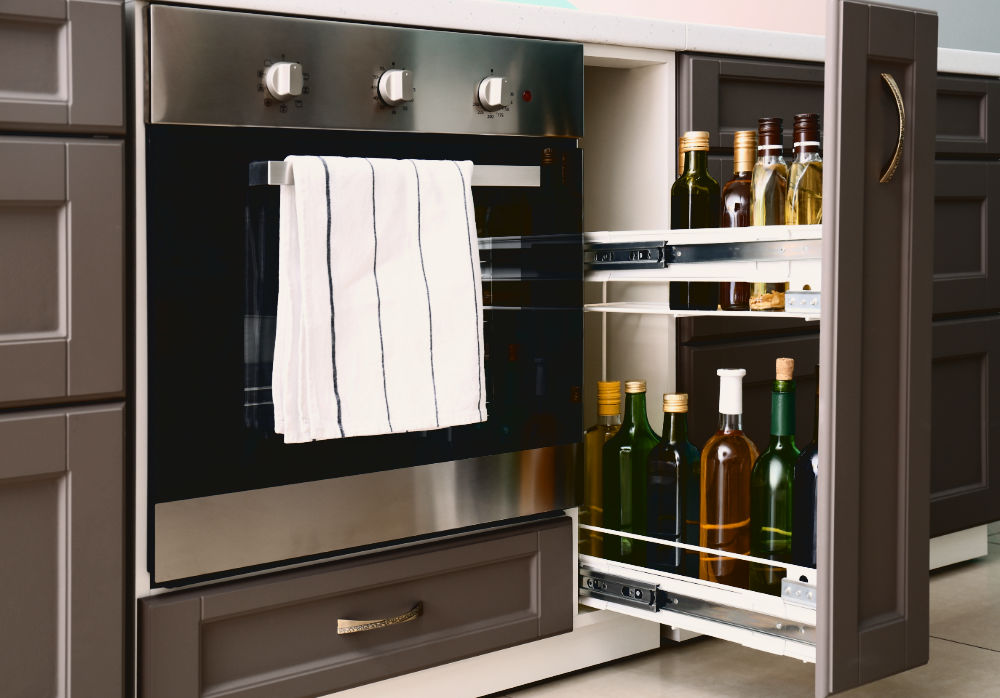
The holiday season often means an abundance of cooking ingredients, utensils, and serving ware, not to mention the increased foot traffic in your kitchen. This is where smart storage solutions play a critical role. Imagine a kitchen where everything has its place, making your holiday cooking a breeze.
Built-in storage solutions, crafted by an expert Lafayette, IN home remodeler, can transform your kitchen experience. Think pull-out cabinets that make reaching for that special holiday spice effortless, or appliance garages that keep your countertops clutter-free while keeping your tools within easy reach.
But what about those extra plates and seasonal decor? Custom pantry organizers can be a game-changer, providing ample and accessible space for all your holiday essentials. This isn’t just about adding shelves; it’s about creating a system that works for you and your unique holiday needs.
While some storage solutions like using vertical space or hanging pot racks might be simple DIY projects, the true potential of your kitchen’s storage capacity is unlocked through professional remodeling. Upgrading to custom cabinetry or reimagining your pantry layout with the help of experts ensures that every inch of your kitchen is optimized, not just for the holidays but for everyday efficiency.
Remember, a well-organized kitchen isn’t just about tidiness; it’s about creating a stress-free environment where holiday cooking and hosting become more enjoyable and less of a chore. So, let’s make the most of your kitchen’s storage potential and ensure this holiday season is marked by joy, not clutter.
Double the Ovens, Double the Feast
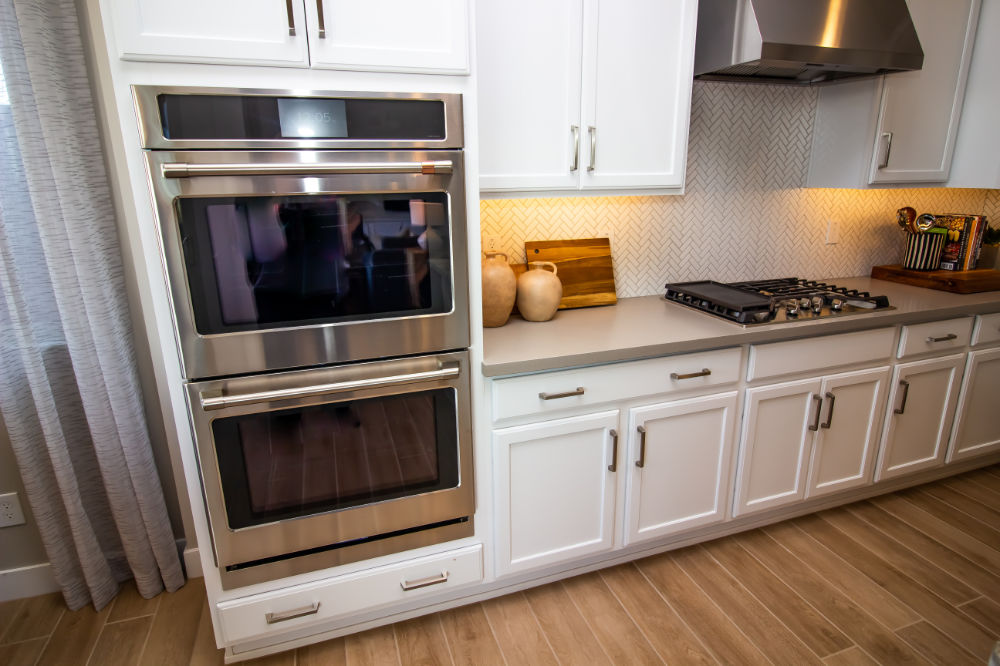
The holidays are a time for generous feasting, and often, that means cooking multiple dishes at once. This is where the brilliance of having double ovens comes into play. Imagine seamlessly roasting your turkey in one, while pies and side dishes get perfectly baked in the other, all at their ideal temperatures.
The beauty of double ovens lies in their versatility and capacity to handle the holiday rush. With double ovens, you’re not just preparing meals; you’re orchestrating a symphony of flavors and aromas, all timed to perfection. This isn’t just a luxury; for avid holiday hosts, it’s a necessity.
But how do you integrate a double oven into your existing kitchen? This is where the expertise of a professional remodeling team becomes invaluable. Our team here at Riverside Construction, for instance, excels in seamlessly integrating double ovens into your kitchen’s layout. Whether it’s designing custom cabinetry to house the new appliances or reconfiguring your kitchen space to accommodate them, professionals ensure that your kitchen not only functions superbly but also maintains its aesthetic appeal.
Choosing the right double oven can be a journey in itself. Do you opt for convection, traditional, or a combination? What size best fits your kitchen and cooking style? A kitchen remodeling expert can guide you through these choices, ensuring that your selection not only meets your holiday needs but also enhances your overall kitchen experience.
So, let’s double the joy and efficiency of your holiday cooking with a kitchen that’s equipped to handle everything the season brings. After all, the best holiday memories are often cooked up in the kitchen.
Countertops That Count
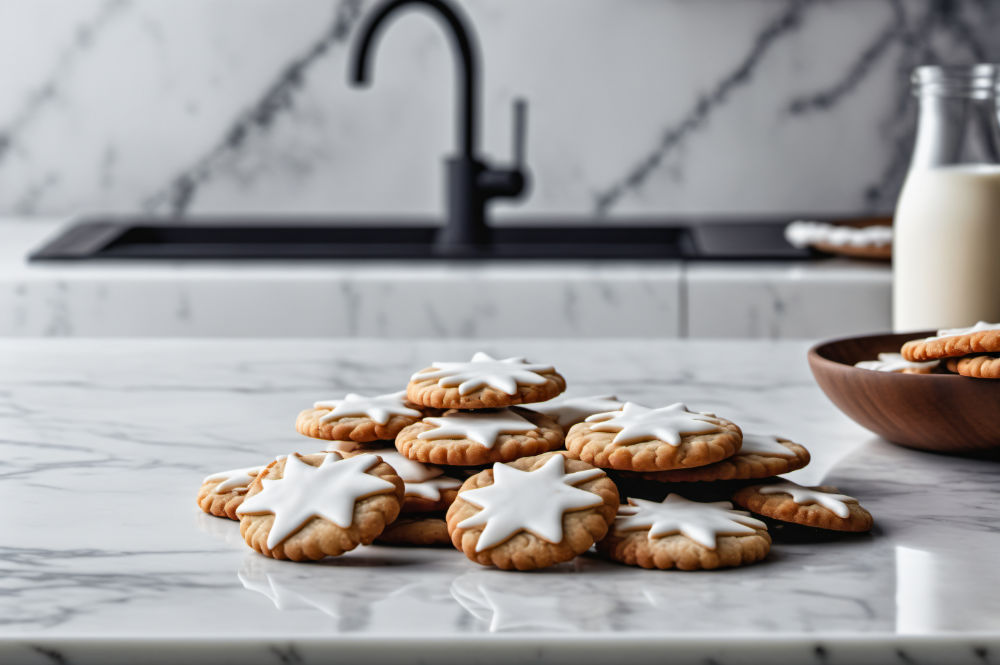
The right countertops can be the unsung heroes of your holiday kitchen. They’re not just surfaces for meal prep; they’re the stages on which your holiday culinary masterpieces come to life. Choosing the right materials for durability, ease of cleaning, and style can significantly elevate your kitchen’s functionality and aesthetic.
Durability is key when selecting countertops, especially during the holiday rush. Materials like quartz or granite offer resilience against scratches and heat – crucial when you’re moving hot pots and pans around. Plus, their easy-to-clean nature means more time enjoying the festivities and less time scrubbing.
But let’s not forget style. The countertop material and design you choose can set the tone for your entire kitchen. Whether you’re going for a sleek, modern look with stainless steel or a warm, inviting feel with butcher block, your countertops should reflect your personal style and complement your home’s overall decor.
Here’s where a professional touch makes all the difference. A kitchen remodel isn’t just about replacing old surfaces; it’s about reimagining your space. A reputable Design/Build remodeler understand how to balance functionality with aesthetics. They can help you navigate the myriad of options, ensuring your countertops aren’t just practical, but also a reflection of your unique taste and lifestyle.
Remember, your countertops are more than just work surfaces. They’re a central part of the kitchen where guests gather, conversations flow, and holiday memories are made. Let’s make sure they’re not only built to last but also to impress.
Room for More: Kitchen Layouts for Multiple Cooks

The holidays often bring together family and friends, and many of those memorable moments happen in the kitchen. But when it becomes a bustling hub of activity, you need a layout that allows multiple people to cook, interact, and enjoy without feeling cramped. That’s where thoughtful kitchen design plays a crucial role.
Designing a kitchen workflow that accommodates multiple cooks is both an art and a science. It’s about creating enough space so that everyone can move around freely, yet keeping the layout intimate enough for shared cooking experiences. This might mean rethinking your kitchen’s traditional work triangle (the space between the stove, refrigerator, and sink) to allow for better flow and accessibility.
The role of kitchen islands and peninsulas can’t be overstated in this scenario. Not only do they provide additional workspace, but they also serve as informal gathering spots for guests or a place for kids to pitch in with holiday preparations. With the right design, these elements can be the focal point of your kitchen, offering both utility and a space for socializing.
We can help you navigate these design considerations. Our team of designers bring expertise in maximizing space, improving workflow, and creating an environment that’s not just functional but also warm and inviting. From selecting the right materials to optimizing the layout, their guidance is invaluable in creating a kitchen that’s ready for the holidays and every day in between.
So, let’s create a kitchen that’s not just a place for cooking, but a space where memories are made, stories are shared, and the holiday spirit thrives.
Island Seating: The Holiday Social Hub
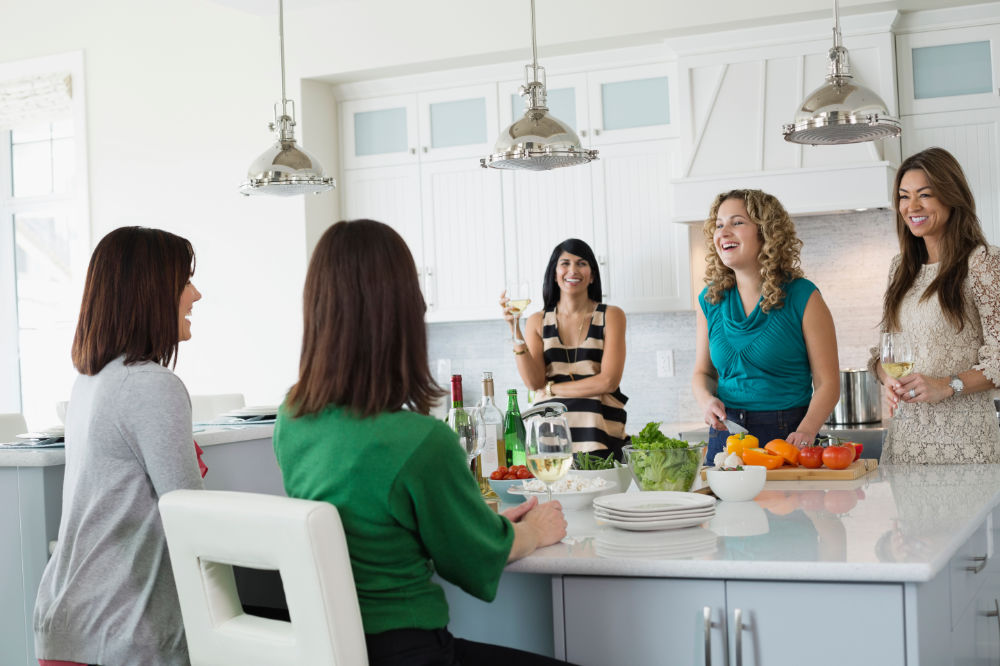
The kitchen island often becomes the heart of the home, especially during the holidays. It’s more than just an additional workspace; it’s where guests naturally gather, conversations flow, and where the warmth of shared experiences radiates. The right seating at your island can transform it into the ultimate holiday social hub.
Choosing the right seating for your kitchen island involves more than just picking stylish stools. It’s about creating an inviting atmosphere that encourages guests to linger and chat. Comfort is key – you want seats that welcome guests to relax, whether they’re sipping on a festive drink or keeping the cook company.
But how do you choose seating that complements your kitchen’s design and holiday decor? This is where a bit of expert advice can go a long way. Whether you’re looking for a sleek, modern look or cozy, rustic charm, designers can guide you in selecting seating that not only matches your style but also enhances the functionality of your kitchen island.
Remember, your kitchen island isn’t just a piece of furniture; it’s a central stage in your holiday hosting. It’s where kids might do their holiday crafts, where friends gather to share stories, or where the last touches to the feast are added. With the right seating, your island can become a cherished spot where holiday moments are enjoyed and remembered.
Let’s make your kitchen island more than just a workspace. Let’s turn it into a warm, inviting social hub that complements your kitchen’s design and elevates your holiday hosting experience.
Bringing It All Together: Elevating Your Holidays with a Dream Kitchen
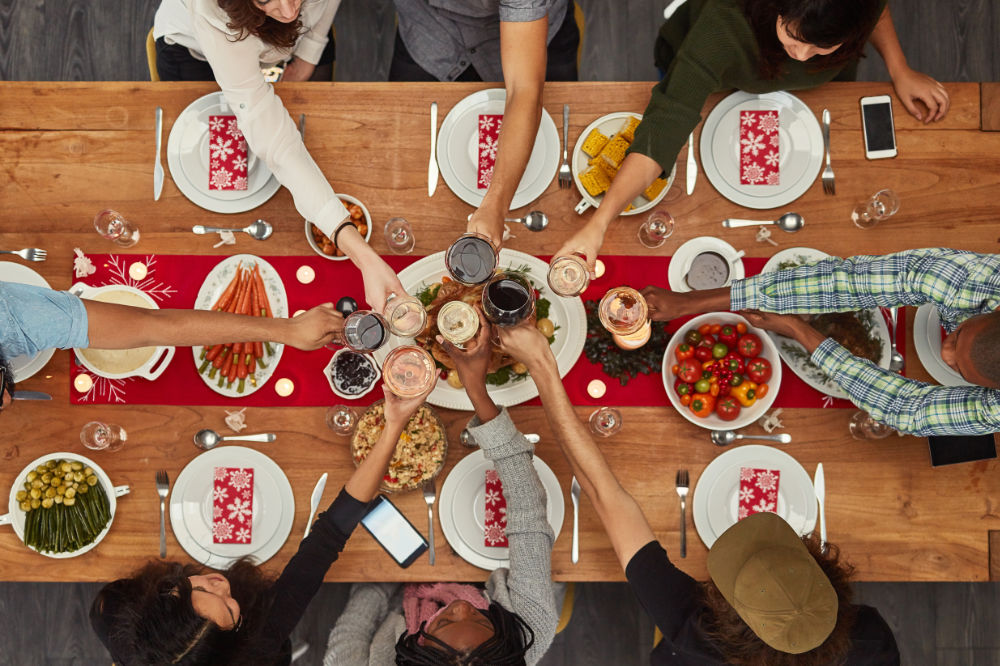
As we’ve explored, the right kitchen updates can transform your holiday hosting experience from stressful to sublime. From maximizing storage space to choosing the perfect countertops, each element plays a vital role in creating a kitchen that’s not just a place for cooking, but a haven for holiday cheer and warmth.
These upgrades do more than just add a festive touch; they enhance the functionality and flow of your kitchen, making it a place where memories are made and traditions are honored. Whether it’s through the practicality of double ovens, the social atmosphere of island seating, or the thoughtful layout for multiple cooks, each update brings you closer to achieving holiday harmony in your home.
And while some improvements can be simple DIY projects, the true transformation of your kitchen into a holiday-ready space often requires the skill and expertise of professional remodelers. We can bring your vision to life, ensuring that every update not only meets your holiday needs but also adds value and beauty to your home year-round. Start dreaming today!
So as you prepare for the holiday season, consider how these kitchen updates can not only ease your hosting duties but also enhance the joy and celebration in your home. Let your kitchen be a space where every holiday moment is cherished, and every meal is a feast of not just food, but of love and togetherness.
Contact Riverside Construction
When you choose Riverside Construction, you can expect a professional and comprehensive approach. By collaborating with our team, you can transform your bathrooms into functional and beautiful spaces that promote safety, independence and comfort for years to come.
Contact us at 765-838-1644 or complete our convenient online form to schedule your free initial consultation.
In the meanwhile, view our portfolio of kitchen remodels. And sign up for our newsletter for ongoing inspiration!
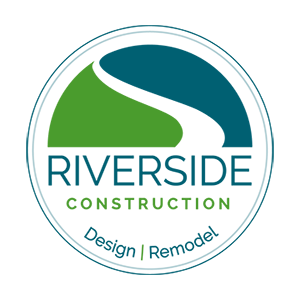
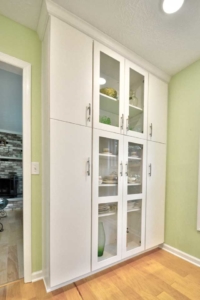
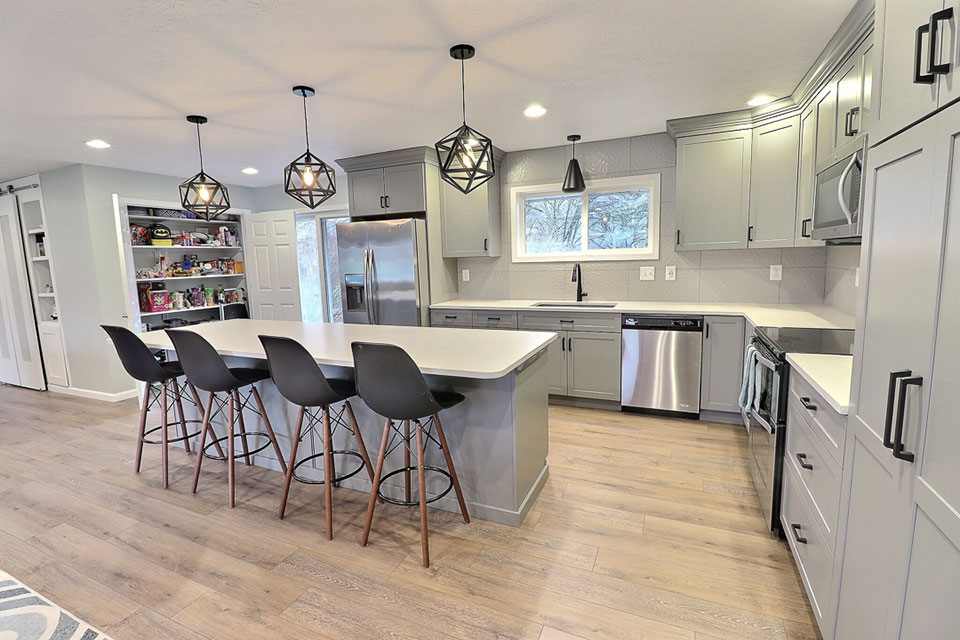
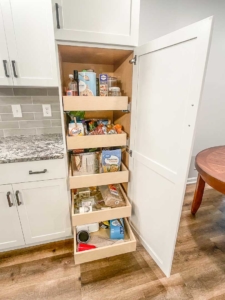
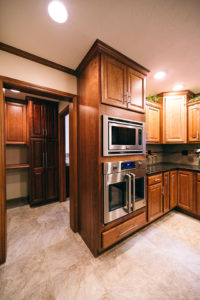
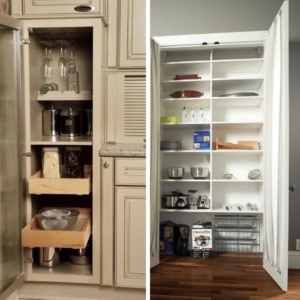
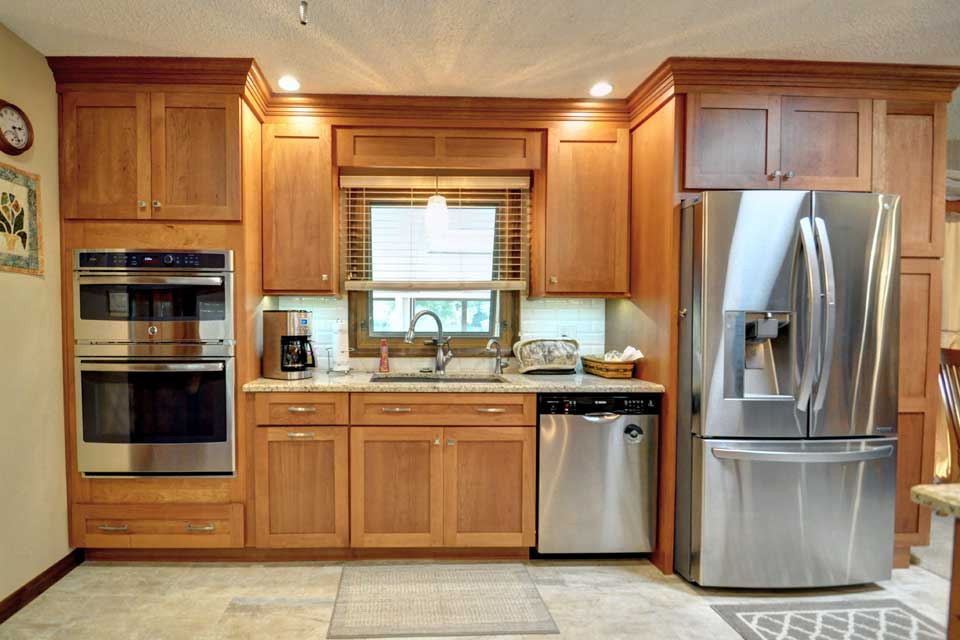
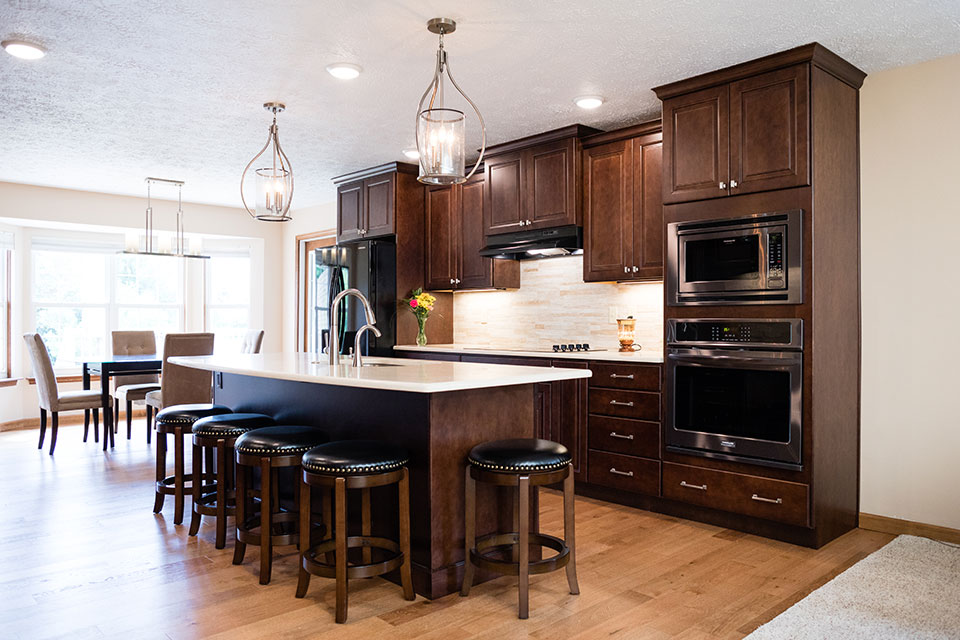
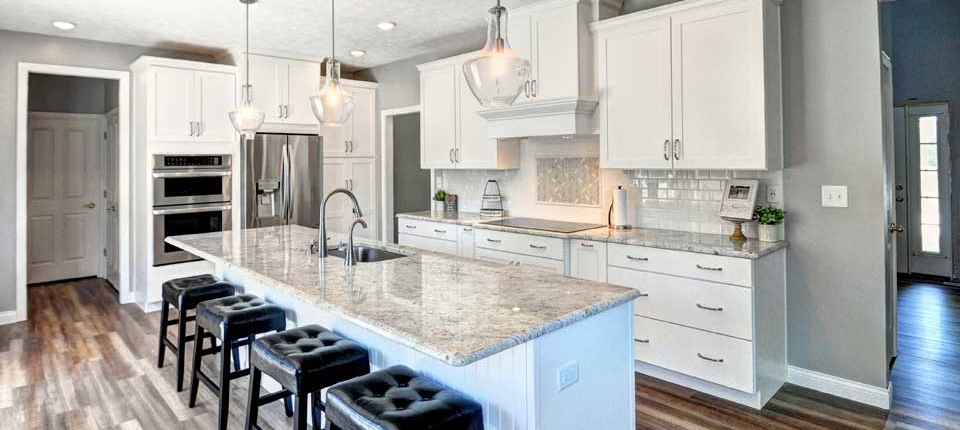
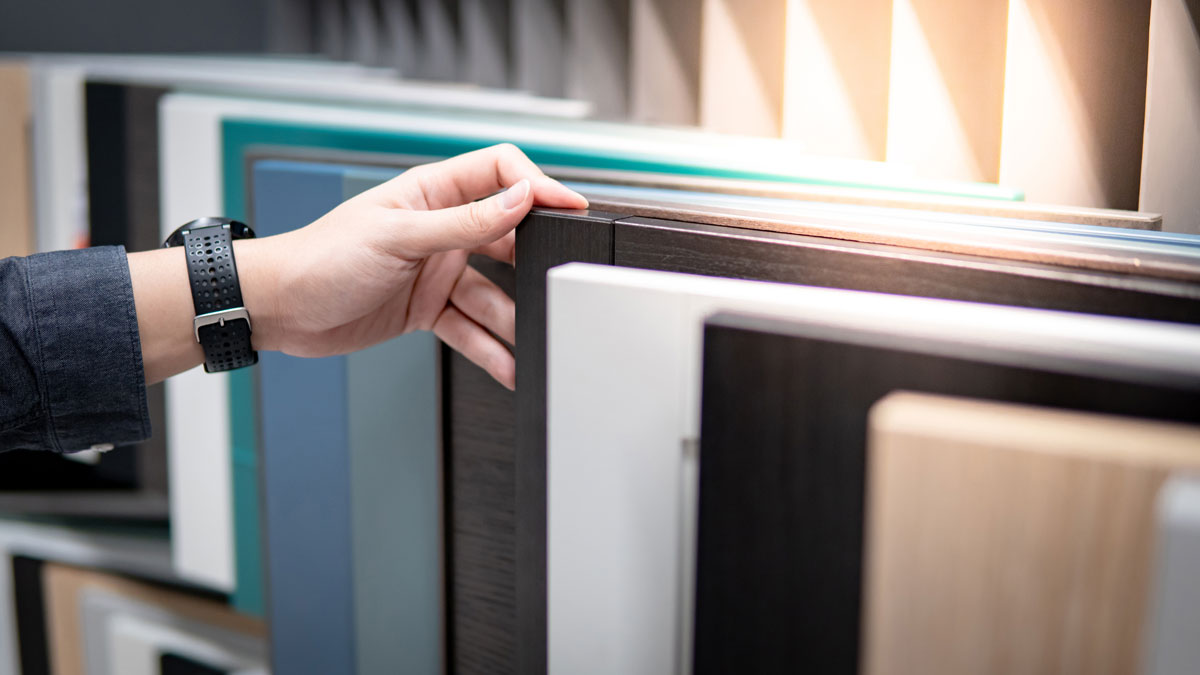
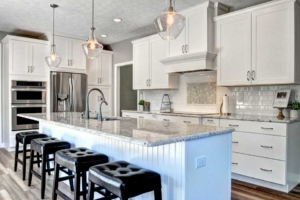
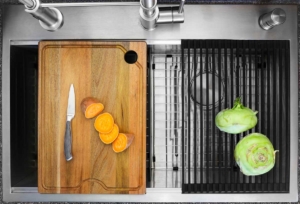 Another increasingly popular kitchen feature is the workstation sink. This is no ordinary sink but has instead been described as the “Swiss army knife of sinks”. Designed to allow for simultaneous tasks to be completed in one area, the workstation sink typically features a chopping board, colander, drying rack, and sometimes multiple faucets.
Another increasingly popular kitchen feature is the workstation sink. This is no ordinary sink but has instead been described as the “Swiss army knife of sinks”. Designed to allow for simultaneous tasks to be completed in one area, the workstation sink typically features a chopping board, colander, drying rack, and sometimes multiple faucets.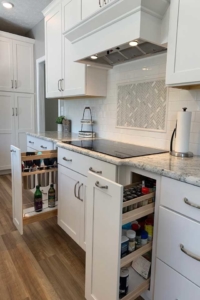 There’s something immensely pleasing about gazing upon the decluttered counters of a newly remodeled kitchen. However, to keep your surfaces clear, clean, and looking fabulous, it’s essential to plan ahead and ensure you incorporate organizational systems that help you keep your kitchen clutter-free.
There’s something immensely pleasing about gazing upon the decluttered counters of a newly remodeled kitchen. However, to keep your surfaces clear, clean, and looking fabulous, it’s essential to plan ahead and ensure you incorporate organizational systems that help you keep your kitchen clutter-free.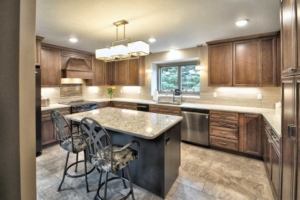
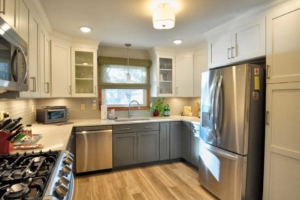
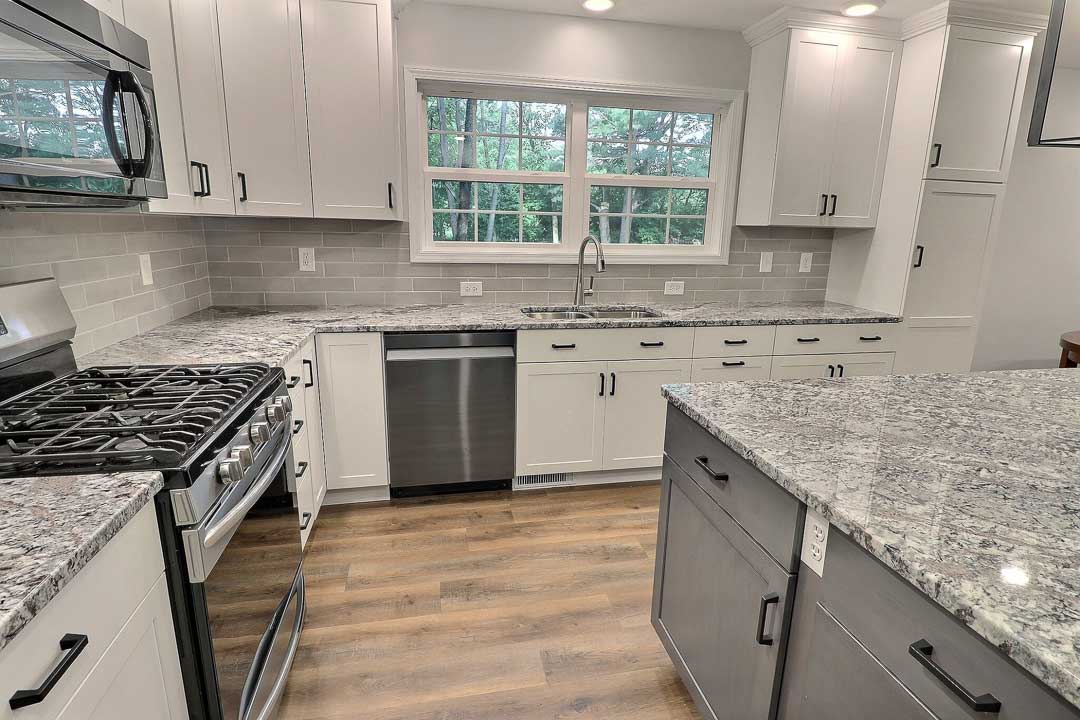
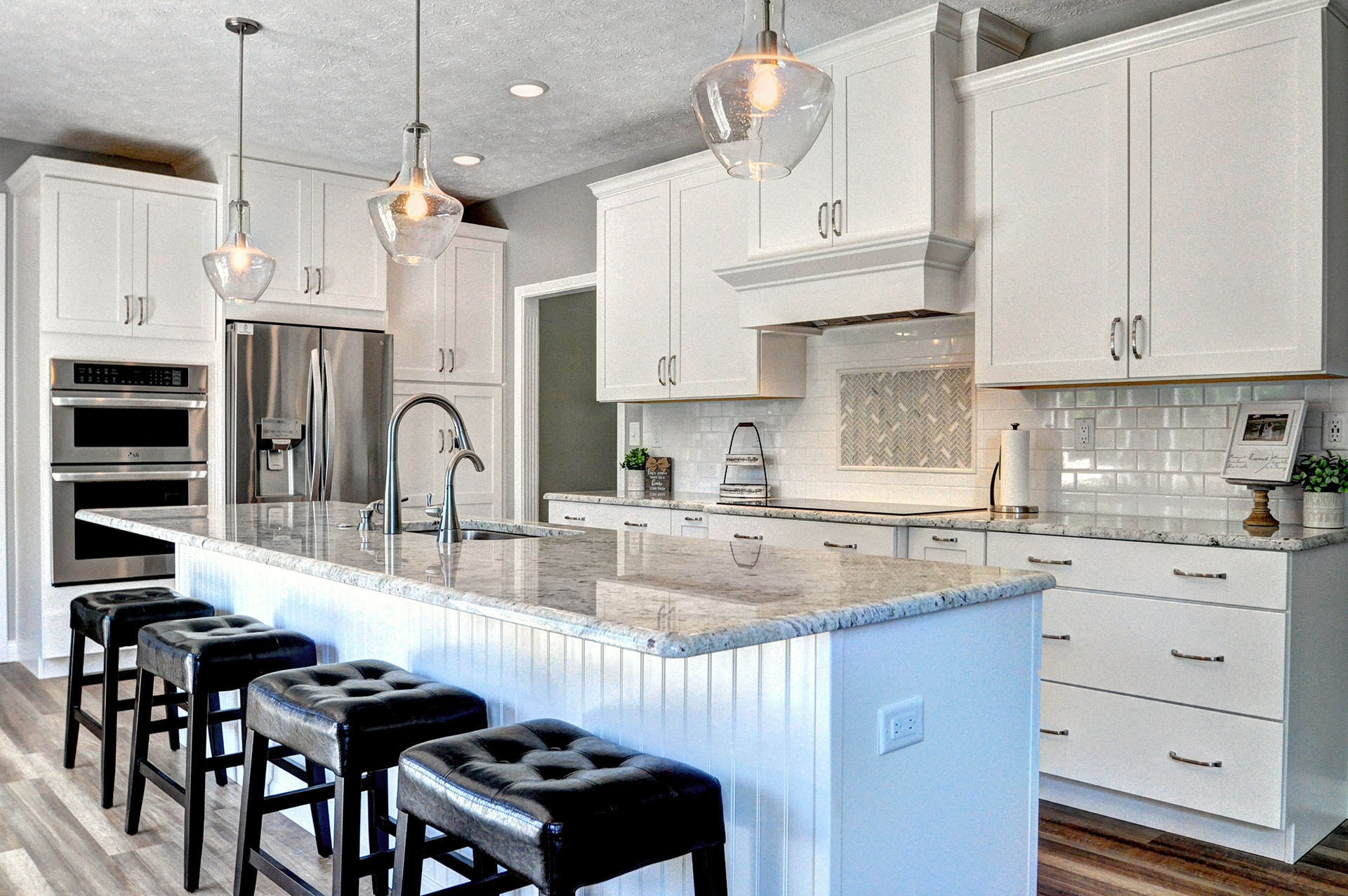
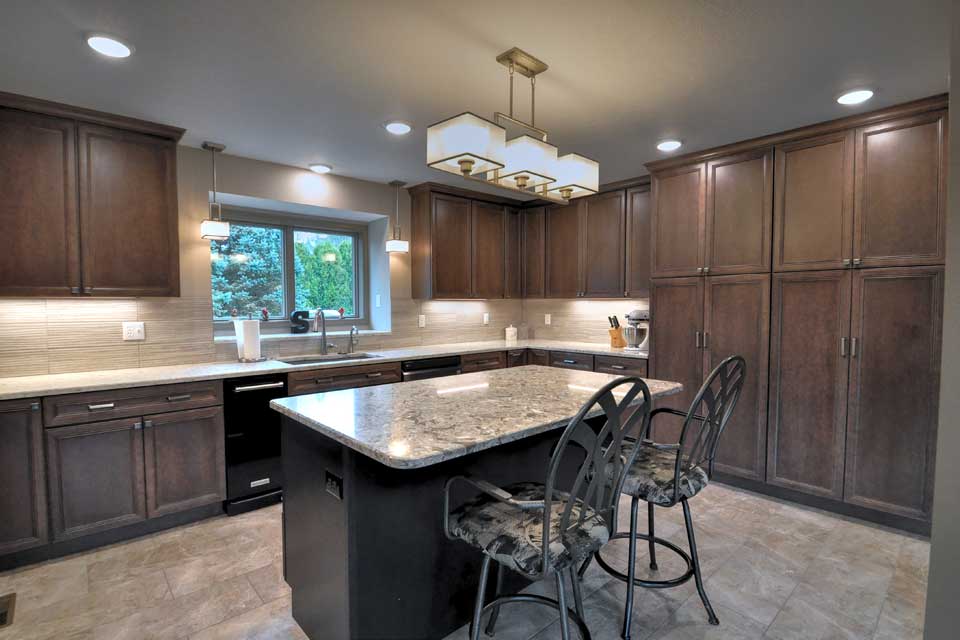
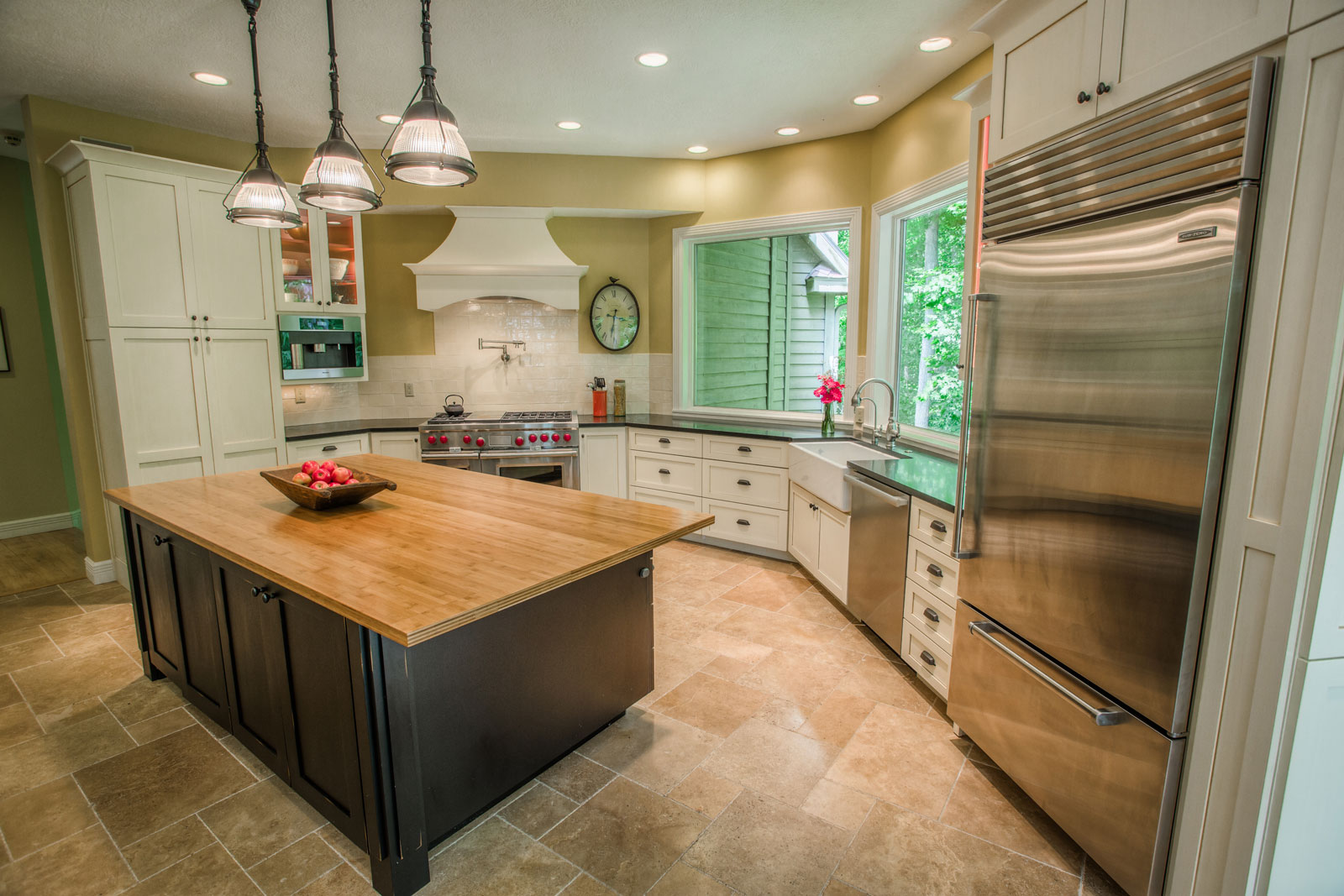
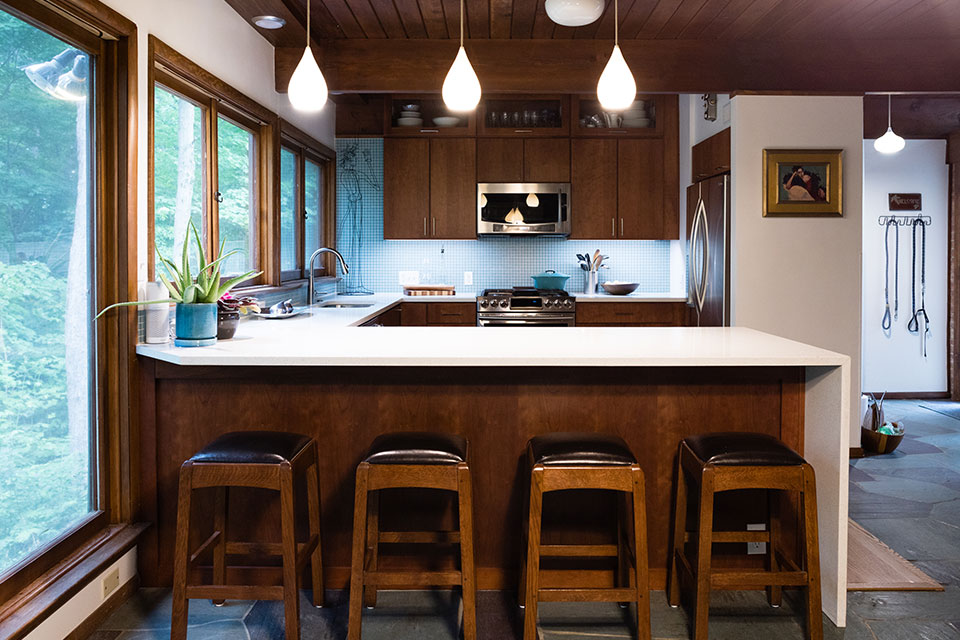
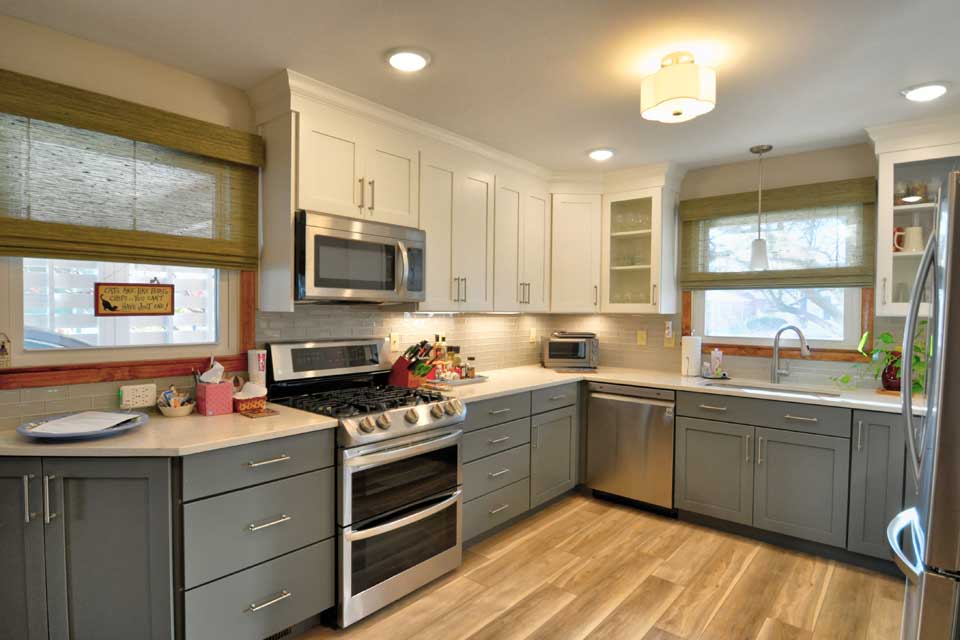
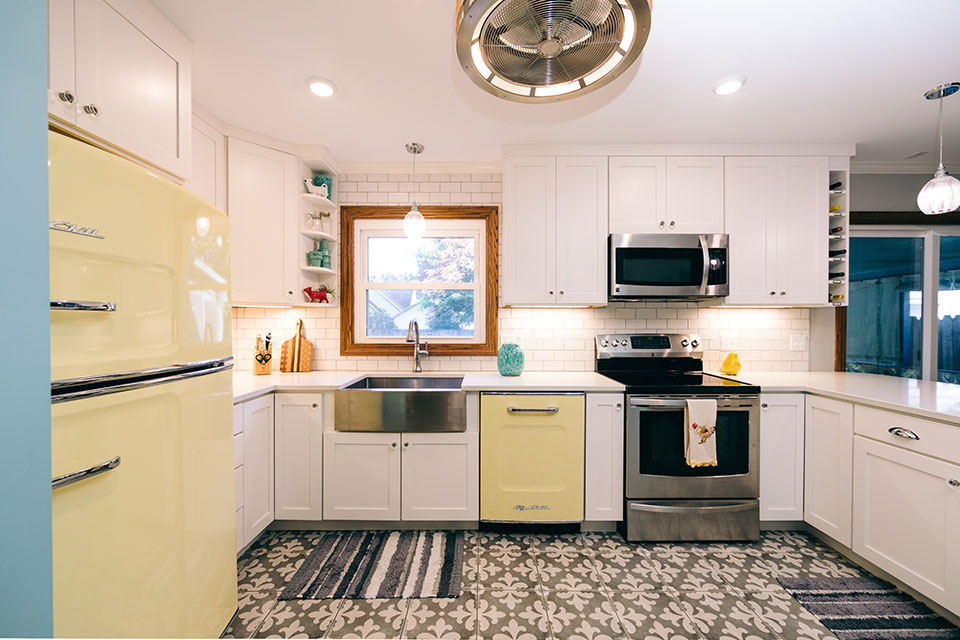
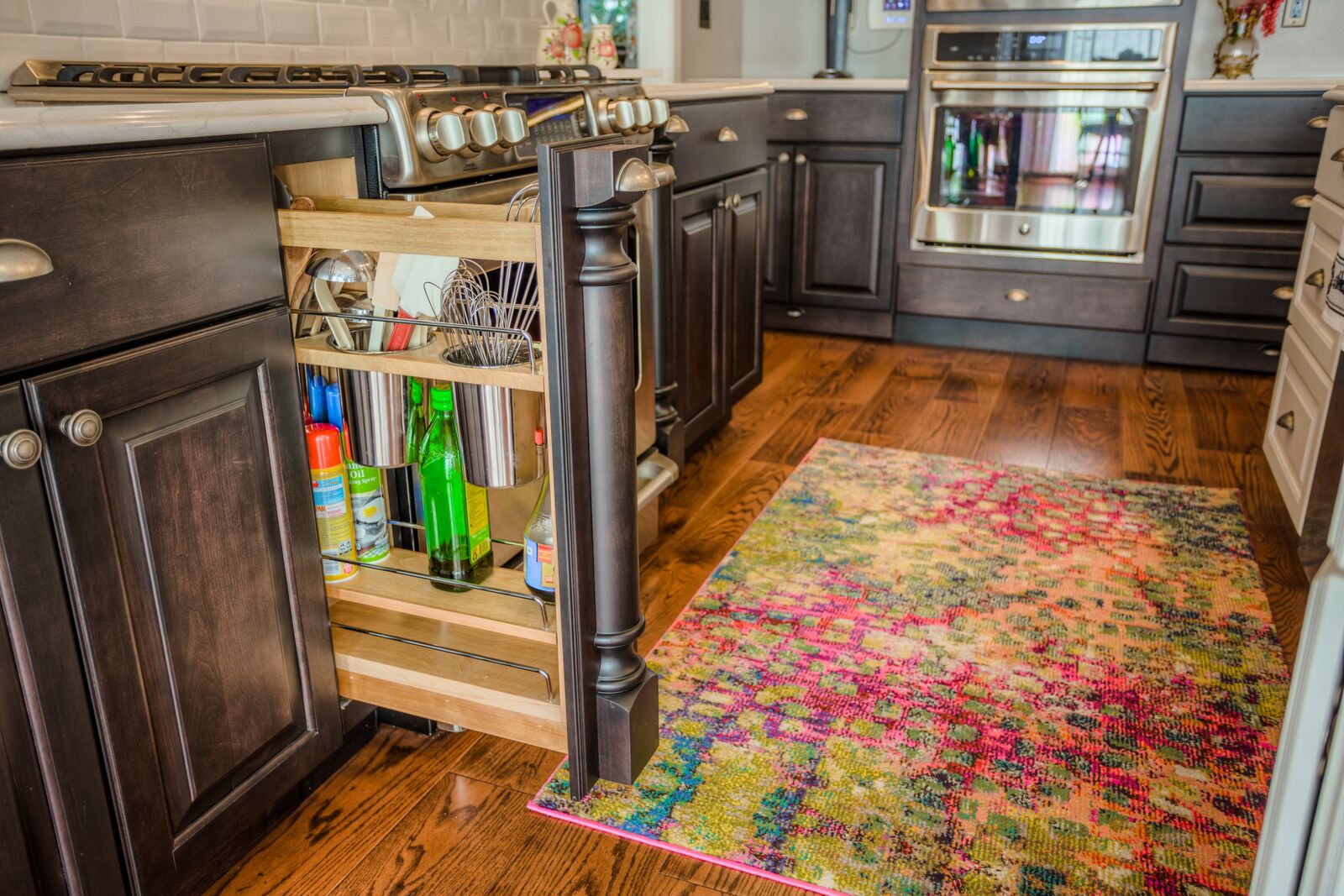
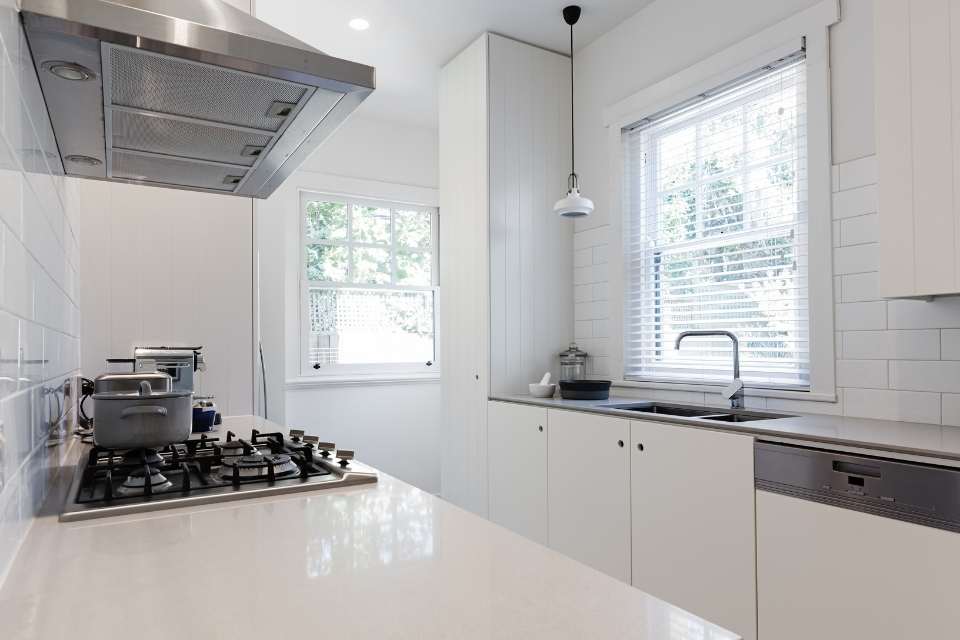
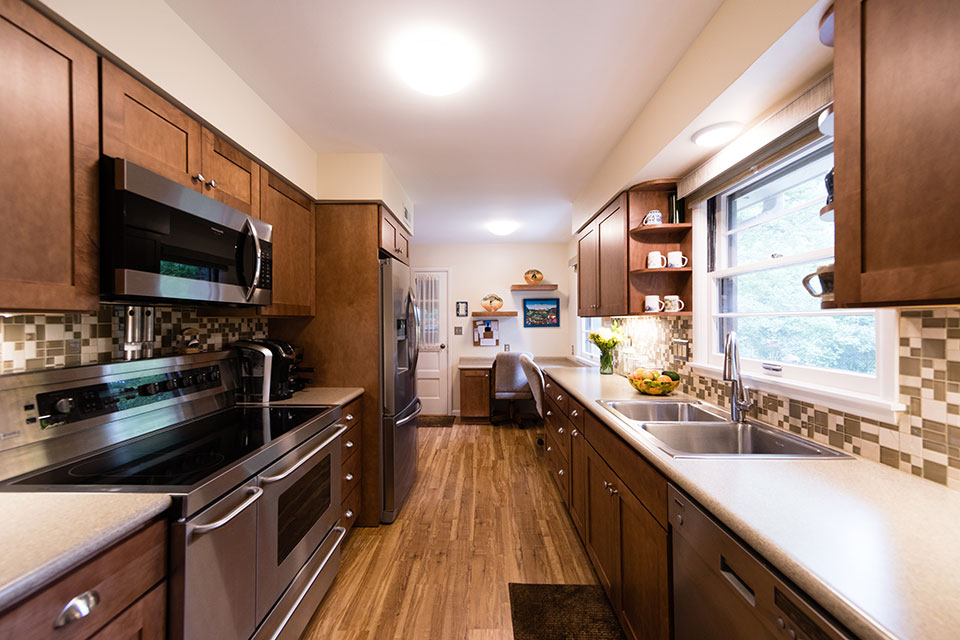
 Depending on what they find behind the soffit, you do have options. After assessing the situation, here are a few more questions to ask your remodeling contractor.
Depending on what they find behind the soffit, you do have options. After assessing the situation, here are a few more questions to ask your remodeling contractor.